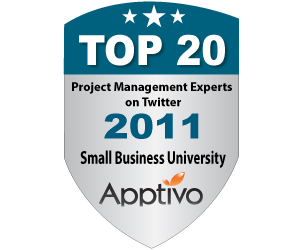Editor’s Note: This issue is brought written by Charanya Girish. Charanya is the Director, Project Management at MESSA (Michigan Special Services Assoc.). She is a certified PMP with over 17 years experience in Project & Program Mgmt and PMOs. She is a member of the PMIGLC Advanced Topics Seminar team, WiPM and the Communications team, PMO SIG. Thanks, Charanya!
A disciplined approach to project execution is recognized as an essential factor for project success in organizations, large and small. The steady growth of Project Management Offices (PMOs) over the last few years in mid-sized enterprises proves that these businesses recognize the value Project Management (PM) can provide.
PMOs come in different flavors depending on their authority and the projects under their purview. At one book-end is the PMO that only provides methodology support for project managers. On the other end they have significant authority over prioritization and management of projects. Mid–sized organizations often do not have deep pockets and so will benefit from a PMO that is more than a mere methodology support arm. A three layered approach proposed below ensures enduring success for the organization.
In the formative stage, it is best to start with a conservative approach with the PMO as the owner of PM standards and methodology. Repeatable best practices are built up over time so that more successful projects flow through to the bottom line, helping build a strong foundation for future phases.
In the second phase the focus is on Project & Portfolio management (PPM) where the department serves as a source of information on all projects contained in the portfolio. The PMO now becomes a bi-faceted department and has to build a strong governance structure to select, prioritize and monitor project investments. Rigorous change control procedures are put in place with a watchful eye on risk and issue management. Metrics tracking takes place for the portfolio and the information is disseminated among all the stake holders. Thresholds are established to determine which projects need to be monitored by the PMO. The portfolio need not track smaller projects as strict adherence to methodology in its entirety for such projects can be an over kill. Thus as a portfolio manager this Office ensures the methodology is adhered to, projects selected have strong business value and well thought-out plans with committed resources.
The third step is part of an emerging trend that positions the PMO as an entity that influences the strategic direction of the enterprise, while continuing its traditional focus on PPM and methodology. In such circumstances the PMO helps align projects to corporate goals through an integrated enterprise project management process. These set of processes enables the Enterprise Governance Board to accelerate, delay or terminate projects so that the portfolio stays continuously aligned to corporate objectives. The PMO helps in organizational change management by setting up procedures that enable the business units to implement the organization's business strategies.
Realizing benefits from such a transformation is not an overnight phenomenon. Each organization differs in its willingness and ability to adapt to change. Returns can be quantifiable over time by reduction in rework and project life cycles coupled with improved quality. Many establishments have little patience for the alterations a PMO ushers in and initial reactions can be heart breaking, despite strong senior management support. The temptation to do a ‘big bang’ change in a short time should be resisted unless the organization can handle it. Applying the right change leadership steps and having a realistic timeline ensures long term success. Such an evolution makes sure the PMO becomes a powerful catalyst for fostering innovation and delivering value to the enterprise.
skip to main
|
skip to sidebar
ProjectWorld and World Congress for Business Analysts blog seeks to bring together all levels of project management and business analysis expertise, from diverse industries and perspectives, across business groups and information technology. Our goal is build successful collaboration and share content, best practices, techniques, and networking.
Blog Archive
-
▼
2009
(102)
-
▼
April
(10)
- PW&WCBA November Keynote: Vincent Cirel
- PW April Newsletter and Web Seminar
- Use social media to help manage your projects
- Project management for manufacturing
- PW&WCBA June 2009 Speaker Profile: Asif Ahmad
- Do project managers need to fail to succeed?
- Gopal Kapur: Six Secrets to Information Technology...
- Complimentary Webinar: Agile Requirements (Not an ...
- Project management in today's world
- PMO value to a mid-sized organization – Charanya G...
-
▼
April
(10)
Our Network of Blogs
Wednesday, April 1, 2009
Subscribe to:
Post Comments (Atom)







No comments:
Post a Comment